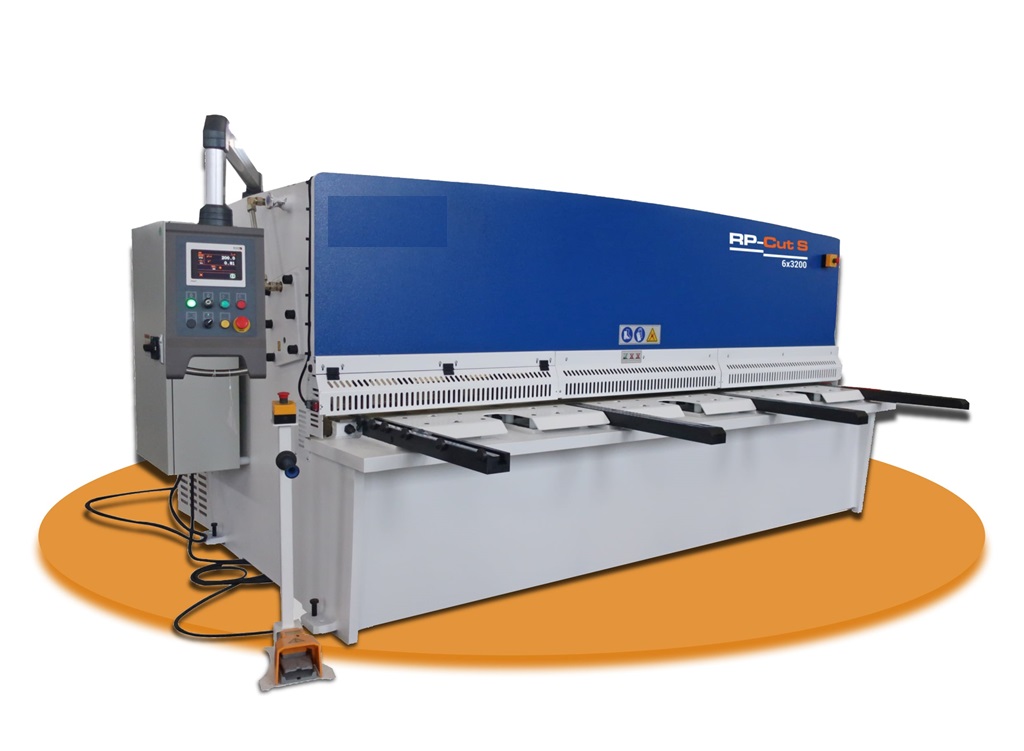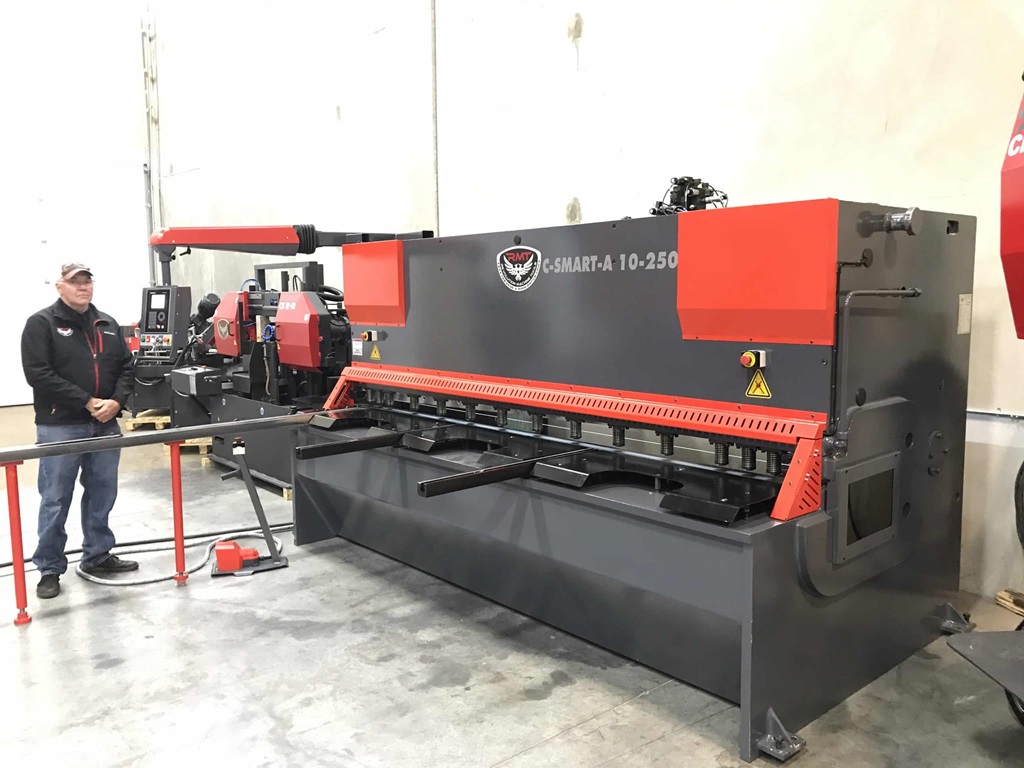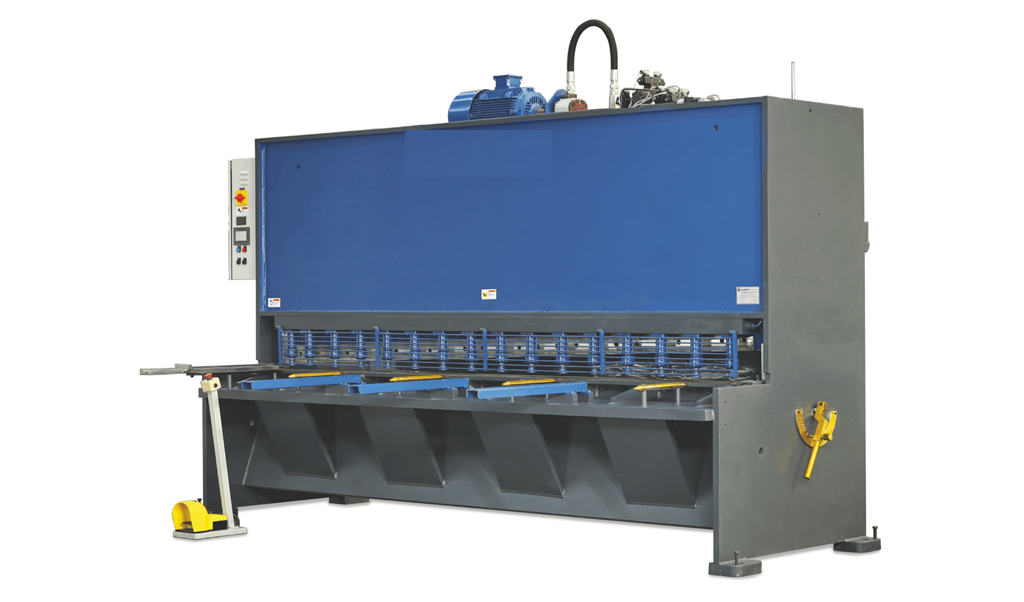
30 Nov Types of Shearing Machines: A Comprehensive Guide
Shearing machines play a pivotal role in various industries, offering efficient and precise cutting solutions. Whether you’re in metal fabrication, automotive manufacturing, or construction, understanding the types of shearing machines available is crucial for optimal results.
Shearing machines, widely used in cutting materials like metal, are indispensable tools in manufacturing and construction. Their ability to make clean and accurate cuts makes them essential across diverse industries.
2. Basic Types of Shearing Machines
Sure, shearing machines are widely used in metalworking to cut or shear sheet metal into desired shapes. There are several types of shearing machines, each designed for specific applications. Here are some basic types:
-
Mechanical Shears:
- These shears use a mechanical linkage to generate the cutting force.
- They are typically used for low- to medium-thickness sheets.
-
Hydraulic Shears:
- Hydraulic shearing machines use hydraulic cylinders to apply the cutting force.
- They are suitable for cutting thicker sheets and are known for their precision and power.
-
Foot Shears:
- Foot shears, or treadle shears, are operated by foot pedals.
- These are manually controlled and are often used for smaller-scale cutting tasks.
-
Gantry Shears:
- Gantry shears have a large cutting bed and are suitable for cutting large sheets of metal.
- They are commonly used in heavy-duty industrial applications.
-
Guillotine Shears:
- Guillotine shears have a movable blade that descends vertically to cut the material.
- They are efficient for straight-line cuts and are used in various industries.
-
Bench Shears:
- Bench shears are small, manually operated shearing machines that are mounted on a workbench.
- They are commonly used for light-duty cutting tasks.
-
Power Shears:
- Power shears are electrically driven and provide a quick and efficient way to cut sheet metal.
- They are often used in high-production environments.
-
Alligator Shears:
- Alligator shears have a jaw-like blade mechanism and are suitable for cutting long strips of material.
- They are commonly used in scrap yards and recycling facilities.
-
Plate Shears:
- Plate shears are designed for cutting large plates of metal.
- They are heavy-duty machines capable of handling thick materials.
-
Circle Shears:
- Circle shears are specialized shearing machines used for cutting circular shapes in sheet metal.
- They are commonly used in the production of round blanks.
The choice of a shearing machine depends on factors such as the thickness and size of the material to be cut, the required precision, and the production volume. Each type of shearing machine has its own advantages and is suitable for specific applications within the metalworking industry.
3. Comparison of Shearing Machines

When deciding on the right shearing machine, understanding the differences is crucial. Mechanical shears excel in speed, hydraulic shears in power, and electric shears in versatility. The choice depends on specific project requirements.
4. Applications in Different Industries
Shearing machines find applications in diverse industries. In metalworking, they are essential for creating precise cuts in sheets and plates. Automotive manufacturing relies on these machines for shaping components, while the construction sector employs them for various cutting tasks.
5. Choosing the Right Shearing Machine
Choosing the right shearing machine is crucial for various metal fabrication and cutting applications. Here are some key factors to consider when selecting a shearing machine:
-
Type of Material:
- Different shearing machines are designed for various materials, such as sheet metal, plates, or rods. Ensure the machine you choose can handle the specific material you’ll be working with.
-
Capacity and Thickness:
- Consider the maximum thickness and width of the material you’ll be cutting. Choose a shearing machine with the capacity to handle your typical workload.
-
Cutting Length:
- Determine the required cutting length for your projects. Shearing machines come in various sizes, so choose one that accommodates the length of material you commonly work with.
-
Cutting Mechanism:
- There are two main types of shearing mechanisms: guillotine and swing beam. Guillotine shears have a straightforward downward blade movement, while swing beam shears have a swinging motion. The choice depends on your specific cutting needs and preferences.
-
Blade Quality and Adjustment:
- High-quality blades are essential for efficient and precise cutting. Additionally, check if the machine allows for easy blade adjustment and replacement, as this can affect the overall performance and maintenance.
-
Cutting Angle:
- Some shearing machines allow you to adjust the cutting angle. This feature is valuable for achieving clean cuts on different materials.
-
Operational Controls:
- Consider the ease of use and accessibility of operational controls. Intuitive controls can improve efficiency and reduce the learning curve for operators.
-
Safety Features:
- Safety should be a top priority. Look for shearing machines with safety features such as finger guards, emergency stops, and safety interlocks to prevent accidents during operation.
-
Power Source:
- Shearing machines can be hydraulic, mechanical, or pneumatic. Choose the power source that aligns with your facility’s infrastructure and energy efficiency goals.
-
Durability and Construction:
- Opt for a machine with a robust and durable construction, as it will likely endure heavy use in a fabrication setting. Consider factors like frame construction, material quality, and overall build.
-
Cost and Return on Investment (ROI):
- While cost is a significant factor, it’s essential to consider the long-term benefits and return on investment. A more efficient and durable machine may justify a higher upfront cost.
-
After-Sales Support:
- Choose a reputable manufacturer or supplier that offers good after-sales support, including maintenance, spare parts availability, and technical assistance.
By carefully considering these factors, you can make an informed decision when choosing a shearing machine that meets your specific requirements and contributes to the success of your metal fabrication projects.
6. Maintenance Tips for Shearing Machines

Certainly! Maintaining shearing machines is crucial to ensure their longevity and optimal performance. Here are some maintenance tips for shearing machines:
-
Regular Inspection:
- Conduct routine visual inspections to identify any signs of wear, damage, or misalignment.
- Check for loose bolts, nuts, and fasteners, and tighten them as needed.
-
Lubrication:
- Keep all moving parts well-lubricated to reduce friction and prevent premature wear.
- Follow the manufacturer’s recommendations for the type and frequency of lubrication.
-
Blade Maintenance:
- Inspect blades regularly for signs of damage or dullness.
- Sharpen or replace blades as necessary to maintain cutting efficiency.
- Ensure proper blade alignment to prevent uneven wear.
-
Alignment Check:
- Check and adjust the alignment of the shearing machine to ensure accurate and precise cutting.
- Misalignment can lead to uneven cuts and increased wear on components.
-
Cleaning:
- Keep the machine clean from debris, dust, and metal shavings.
- Use compressed air or a brush to remove accumulated particles in and around moving parts.
-
Electrical Components:
- Inspect electrical components, such as wiring and switches, for any signs of damage or wear.
- Ensure that all electrical connections are secure and free from corrosion.
-
Safety Features:
- Regularly test and ensure the functionality of safety features, such as emergency stops and interlocks.
- Replace any damaged safety components immediately.
-
Operator Training:
- Train machine operators on proper usage and handling to prevent misuse or accidental damage.
- Encourage operators to report any issues promptly for timely resolution.
-
Record Keeping:
- Maintain a log of maintenance activities, including lubrication, blade replacements, and inspections.
- Use this log to schedule routine maintenance and identify any emerging patterns of wear.
-
Professional Servicing:
- Schedule regular professional servicing of the shearing machine.
- Professional technicians can identify and address potential issues before they become major problems.
-
Storage:
- Store the shearing machine in a clean and dry environment when not in use.
- Cover the machine to protect it from dust and environmental factors.
By following these maintenance tips, you can ensure that your shearing machine operates efficiently, extends its lifespan, and reduces the risk of unexpected breakdowns.
7. Emerging Technologies in Shearing Machines
As technology advances, shearing machines benefit from innovations like automation and smart controls. These developments enhance efficiency and precision, reducing manual intervention and minimizing errors.
8. Shearing Machine Safety
Safety is paramount when operating shearing machines. Following established safety protocols and guidelines is crucial to prevent accidents and ensure a secure working environment.
9. Notable Brands and Models
Several reputable manufacturers produce high-quality shearing machines. Understanding the offerings of these brands and their popular models helps in making informed purchasing decisions.
10. User Reviews and Feedback

Exploring user experiences on online platforms provides valuable insights into the real-world performance of different shearing machines. Reading reviews and engaging in discussions can aid in decision-making.
14. Future Trends in Shearing Technology
The shearing machine industry is evolving, with ongoing advancements in technology. Predictions indicate increased automation, integration of AI, and enhanced precision, shaping the future of shearing technology.
Conclusion
In conclusion, the diverse types of shearing machines cater to varied industrial needs, offering efficiency and precision in material cutting. Choosing the right machine, prioritizing safety, and staying abreast of technological advancements are keys to harnessing the full potential of shearing machines.
FAQs
Q1: Can shearing machines cut materials other than metal?
Yes, shearing machines can cut a variety of materials, including plastic, rubber, and composite materials.
Q2: How often should I perform maintenance on my shearing machine?
Regular maintenance is recommended, with a thorough check and lubrication every few months, depending on usage.
Q3: Are electric shears more energy-efficient than other types?
Yes, electric shears are generally more energy-efficient due to their direct power source and reduced mechanical components.
Q4: Can shearing machines be used for intricate cutting designs?
While shearing machines are excellent for straight cuts, laser or waterjet cutting is more suitable for intricate designs.
Q5: Are there portable shearing machines available for on-site cutting?
Yes, there are portable shearing machines designed for on-site cutting, providing flexibility in various work environments.

No Comments